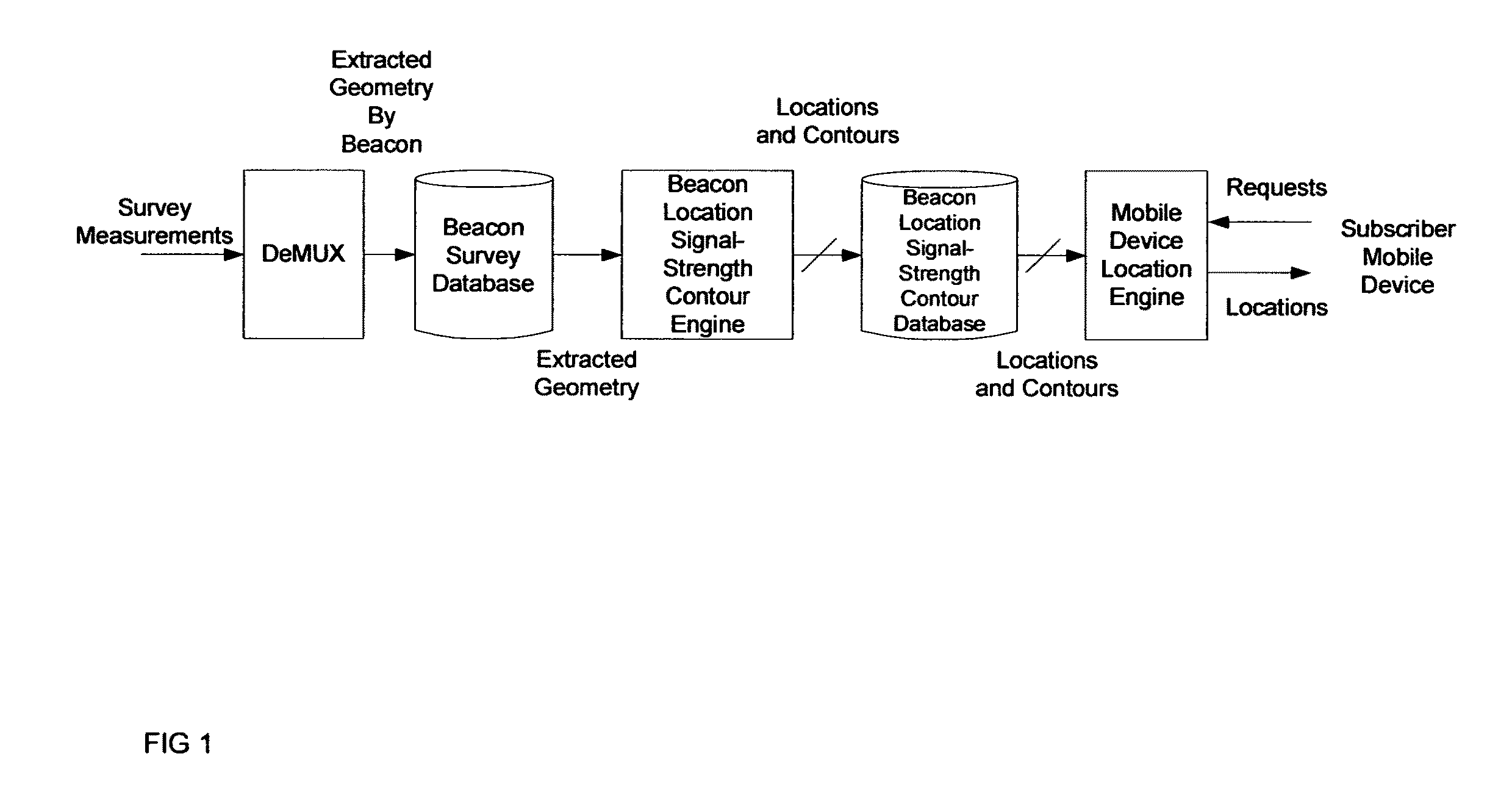System framework for mobile device location
a mobile device and system framework technology, applied in the field of determining location, can solve the problems that the access-point-based system has not yet demonstrated its viability, and achieve the effect of easy and efficient measurement, quick and inexpensive compilation and maintenan
- Summary
- Abstract
- Description
- Claims
- Application Information
AI Technical Summary
Benefits of technology
Problems solved by technology
Method used
Image
Examples
Embodiment Construction
[0044]In general, the object of the present invention is to provide an MDLS framework to enable the rapid and inexpensive compilation and maintenance of a comprehensive Beacon Survey Database, with the accuracy required by current and contemplated location-based applications. As the repository for field measurements, applied ultimately to estimate the locations of subscribers' mobile devices, the Beacon Survey Database influences virtually every metric of importance to the operators as well as the subscribers of location services. Measurements must be easily and efficiently obtained, using accurate but inexpensive instruments.
[0045]The framework of today's mobile device location systems, which exist to address the occasional failure of on-board GPS, is based on GPS, the implicit premise being that when on-board GPS fails, the network will be able to provide a GPS-based estimate of the location using cues (beacon ID's, signal strengths) supplied by the mobile device. This premise is ...
PUM
 Login to View More
Login to View More Abstract
Description
Claims
Application Information
 Login to View More
Login to View More - R&D
- Intellectual Property
- Life Sciences
- Materials
- Tech Scout
- Unparalleled Data Quality
- Higher Quality Content
- 60% Fewer Hallucinations
Browse by: Latest US Patents, China's latest patents, Technical Efficacy Thesaurus, Application Domain, Technology Topic, Popular Technical Reports.
© 2025 PatSnap. All rights reserved.Legal|Privacy policy|Modern Slavery Act Transparency Statement|Sitemap|About US| Contact US: help@patsnap.com



